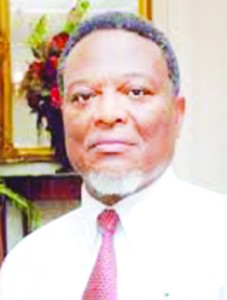
Prime Minister Samuel Hinds has announced plans to acquire an additional 2000 solar panels for the ongoing Hinterland Electrification Programme, under which homes and schools in the hinterland are being supplied with electricity.
The announcement came after numerous testimonies by toshaos last week about the government fulfilling its promise to deliver solar panels to the various Amerindian villages, the Government Information Agency (GINA) said.
“We are looking to get it (solar panels) either from a programme of assistance or maybe in next year’s budget. So we have that in mind,” Prime Minister Hinds said during the just-concluded toshaos conference held at the Guyana International Conference Centre (GICC) in Liliendaal, Greater Georgetown.
During day three of the meeting, some toshaos who had not yet received their panels made inquiries of the prime minister at a highly-interactive session attended by President Donald Ramotar and other Cabinet members.
The distribution process was one of several that suffered a major setback after the opposition cut funding for the country’s Low Carbon Development Strategy (LCDS) that specifically targeted Amerindian community development.
The action had discouraged and disappointed many of the Amerindian village leaders and villagers themselves who were eagerly anticipating the arrival of the panels, intending to capitalise on the availability of electricity, especially during the evening hours.
The first phase of the project saw 11,000 65-watt photovoltaic solar home systems being made available to residents, and about 184 villages began receiving about 12 to 15 kilowatt hours of electricity.
Hinterland Electrification Unit
The Hinterland Electrification Unit of the Office of the Prime Minister has been the executing agency and has facilitated training in assembling, installing, and maintaining the systems. Residents from 184 villages were trained.
The prime minister also announced that a technical representative from the Office of the Prime Minister will be visiting Isseneru to follow up on a request for a generator.
In villages, like Himacabra and Kabakaburi in Region One and St Cuthbert’s Mission in Region Four, the solar panels can be considered a success story. Solar panels distribution and installation have been successfully completed for all households at Himacabra, Toshao Joan Williams told her fellow leaders while presenting an update on progress in her community.
With electricity fast becoming a reality in the hinterland areas, the government is now aggressively focusing on the establishment of computer hubs to pilot the One Laptop Per Family (OLPF) project in the Amerindian villages. Waramadong, Region Seven is one of 50 hinterland locations that have been earmarked for the launch of the initiative, and unlike the coastland where computers are delivered to individual homes; the hubs will provide a central location where villagers will meet for computer training.



